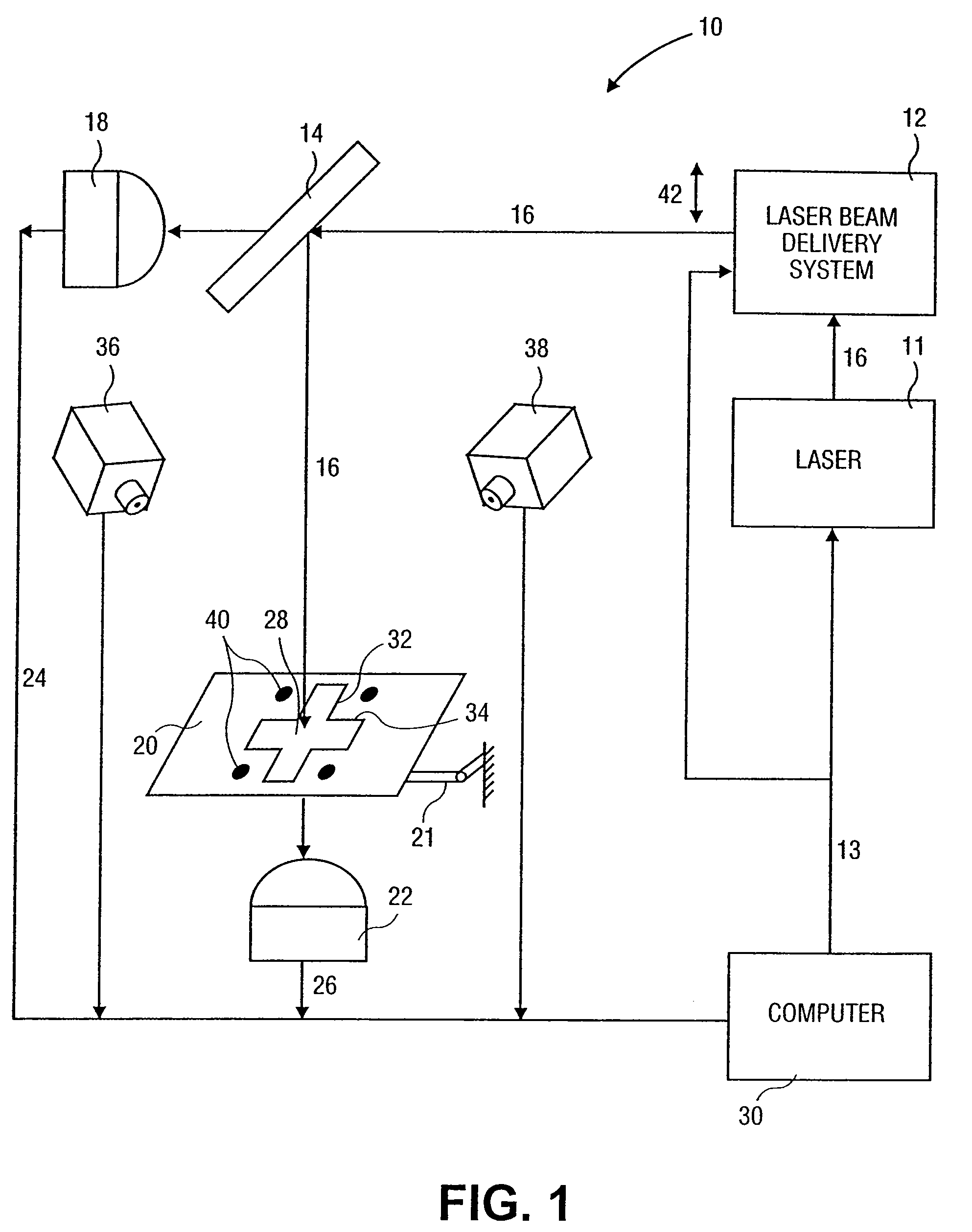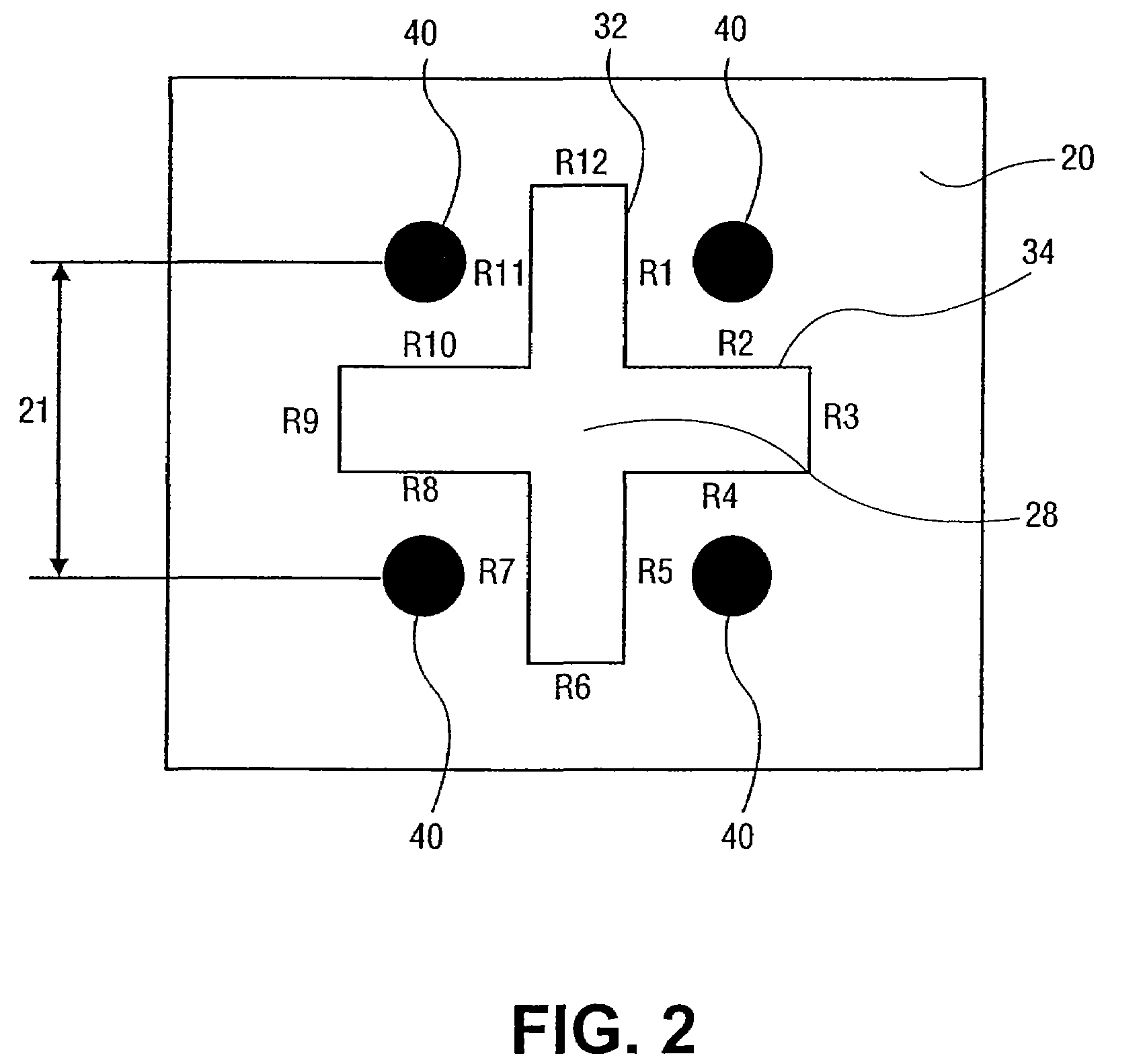Methods and systems for laser calibration and eye tracker camera alignment
a laser calibration and eye tracking technology, applied in the field of laser calibration and can solve problems such as laser system faults, achieve the effects of facilitating eye tracking camera alignment, increasing the overall system cost and complexity, and enhancing calibration accuracy
- Summary
- Abstract
- Description
- Claims
- Application Information
AI Technical Summary
Benefits of technology
Problems solved by technology
Method used
Image
Examples
Embodiment Construction
[0034]The present invention provides methods, systems, and apparatus for calibrating a laser ablation system, such as an excimer laser system for selectively ablating a cornea of a patient's eye. The present invention also facilitates aligning eye tracking cameras that measure a position of the eye during laser eye surgery. In particular, the present invention provides methods and systems which measure laser energy, laser beam shape, and / or laser beam dimensions with enhanced calibration accuracy. By determining an exact quality of a laser beam, a desired corneal ablation treatment can be accurately effected via an ablation algorithm without underablating or overablating corneal tissue, or the laser beam becoming incident on undesired locations of corneal tissue causing off-center ablations. Moreover, embodiments of the present invention allow for laser beam calibration and eye tracker camera alignment to be simply and conveniently carried out utilizing a single, reusable fixture.
[0...
PUM
| Property | Measurement | Unit |
|---|---|---|
| wavelength | aaaaa | aaaaa |
| wavelengths | aaaaa | aaaaa |
| Wavelengths | aaaaa | aaaaa |
Abstract
Description
Claims
Application Information
 Login to View More
Login to View More - R&D
- Intellectual Property
- Life Sciences
- Materials
- Tech Scout
- Unparalleled Data Quality
- Higher Quality Content
- 60% Fewer Hallucinations
Browse by: Latest US Patents, China's latest patents, Technical Efficacy Thesaurus, Application Domain, Technology Topic, Popular Technical Reports.
© 2025 PatSnap. All rights reserved.Legal|Privacy policy|Modern Slavery Act Transparency Statement|Sitemap|About US| Contact US: help@patsnap.com



